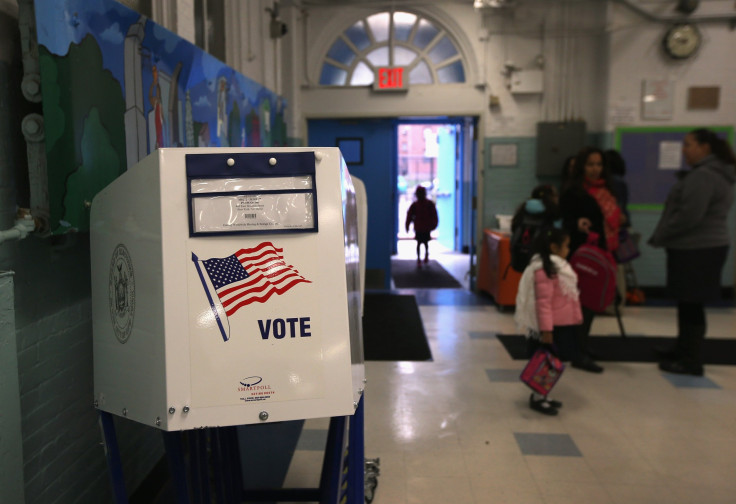Youth Voter Turnout For 2014 Midterm Election Lowest In 40 Years: Report

Youth turnout and registration for the 2014 midterm election were the lowest the United States has seen in 40 years, according to a new report released Wednesday. Data from the U.S. Census' Current Population Supplement showed only 19.9 percent of 18-to-29-year-olds voted in 2014, a drop from the 24 percent who voted in the 2010 midterm, the Center for Information and Research on Civic Learning and Engagement at Tufts University found.
With Wednesday's report, the center adjusted a previous, poll-based estimate that about 21.5 percent of youth voted last year. It also calculated that only 46.7 percent of young people registered to vote -- the lowest figure since 1972, according to a news release. The center cited strict voter ID laws, a move away from grassroots campaigns, and an emphasis on swing voters as possible reasons for the decrease.
Its director, Kei Kawashima-Ginsberg, said in the release the statistics were concerning, especially as the country prepares for next year's general election. “Recent elections have shown the potential power of young voters to influence an election, but this new analysis should be received as a warning signal to all 2016 presidential candidates,” she added.
Midterm turnout as a whole was unusually low, as well. About 36.4 percent of eligible voters participated last November -- the lowest in 72 years, Time reported. In 2010, 40.9 percent did.
General elections tend to mobilize more young voters -- and voters overall, for that matter -- for several reasons, not the least of which is the buzz and excitement around electing a new president. Now-President Barack Obama relied on the youth vote to get him into office in 2008 and re-elected in 2012. And their influence should be growing: By next year, the millennial generation is expected to make up one-third of the voting population.
The center wanted candidates to keep that in mind. "Research shows that campaigns not only need to talk to them, but should also involve them more as volunteers," Kawashima-Ginsberg said. "In fact, the rate of youth turnout in presidential elections corresponds with rate of campaign contact.”
Several 2016 candidates have already made moves to endear themselves to young voters -- mostly by discussing student debt, which recently reached $1.3 trillion nationwide. In May, Sen. Bernie Sanders, I-Vt., proposed making four-year public colleges and universities tuition-free. Former Maryland Gov. Martin O'Malley followed up this month with a policy paper proposing frozen tuition rates, restored higher education funding and loan refinancing options. Democratic front-runner Hillary Clinton's debt-free plan was likely coming, and although former Florida Gov. Jeb Bush has said wiping away debt isn't the way to go, he wanted to see reform "so that full-time students can get a four-year degree in four years and they’ll be able to access a job."
© Copyright IBTimes 2025. All rights reserved.






















